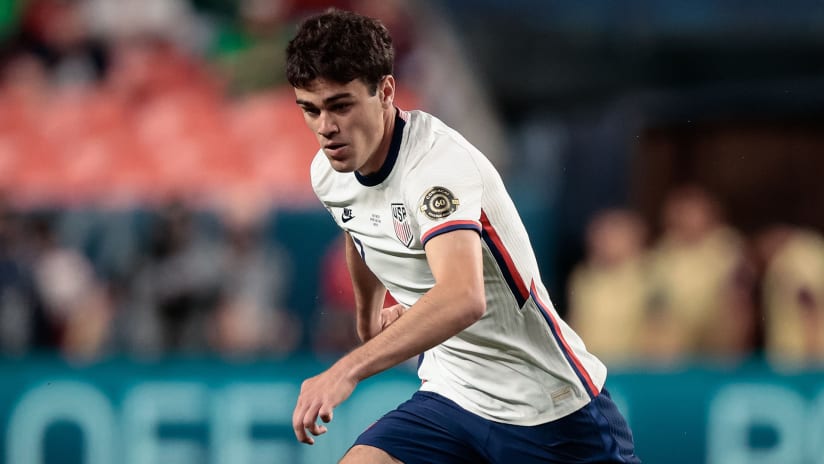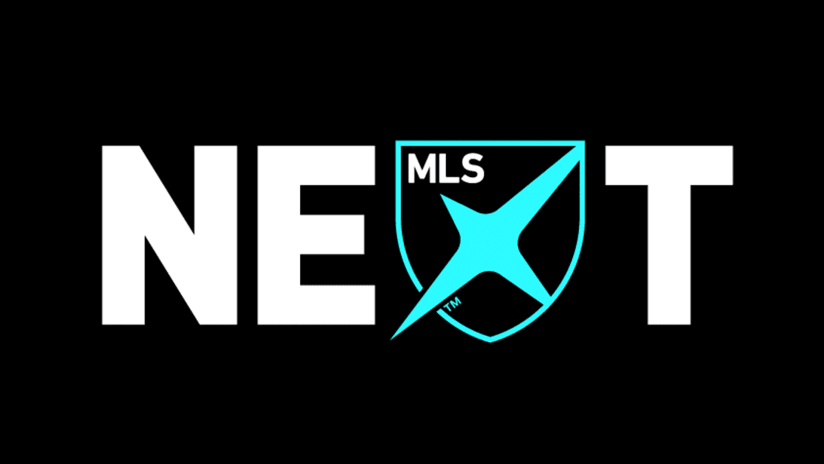Atlanta United christened their glittering new Mercedes-Benz Stadium home with a decisive 3-0 defeat of FC Dallas in front of another bumper crowd last weekend, turning heads both at home and abroad.
But in the long run, another win over FCD two months prior – in front of a far smaller crowd and in much humbler surroundings – might well prove to be the most fateful result of the MLS expansion club’s inaugural season.
On July 16, Atlanta’s U-15/16 academy team knocked off the defending champions from Dallas in the U.S. Soccer Development Academy’s national final in Carson, California, as a brace from Homegrown signing Andrew Carletonearned the first trophy in ATLUTD’s history. It capped a sterling campaign in which the U-16s lost just four games in all, while helping groom the five Homegrown players already signed by the first team – and in the academy’s first full year of existence, to boot.
NATIONAL CHAMPIONS ⚽️🏆
— Atlanta United FC (@ATLUTD) July 17, 2017
Congratulations, @AcademyATLUTD! Making your club & your city proud! #UniteAndConquerpic.twitter.com/4YMh78LKeK
“I feel that we’re still really young, we’re still right at the beginning,” academy director and coach Tony Annan told MLSsoccer.com this week. “We’re a year into it – obviously we had great success in the first year, which set a bar really high. But it was kind of a good thing for us, because it shows what we can do. So we’ve set our goals extremely high for the next couple of years. I’m happy, I’m pleased, but my feet are firmly on the ground.”
Winning the national title in year one – and showcasing a similar playing style to the first team most of the way – underlined the breathtaking speed and ambition with which the Five Stripes have crafted a powerhouse youth development system. And it represents a warning to the rest of MLS and the wider North American youth soccer scene: A sleeping giant has awoken.
“They have completely changed the youth landscape,” said Jeff Newbury, a longtime coach and director at the Decatur-DeKalb YMCA Soccer Club, a grassroots organization on the east side of the Atlanta metro area that produced ATLUTD Homegrown and US U-17 national teamer Lagos Kunga (pictured below).
“The state of Georgia is famous for having a lot of counties [159, to be exact, second-most in the US] – but we probably have more youth clubs,” Newbury explained. “We probably have somewhere over 200 youth clubs. So you have somewhat of a – I won’t say toxic, that’s not the right word, but you have a highly competitive market. What [Atlanta United] were able to do was come into that and remain above all that. And that was huge.
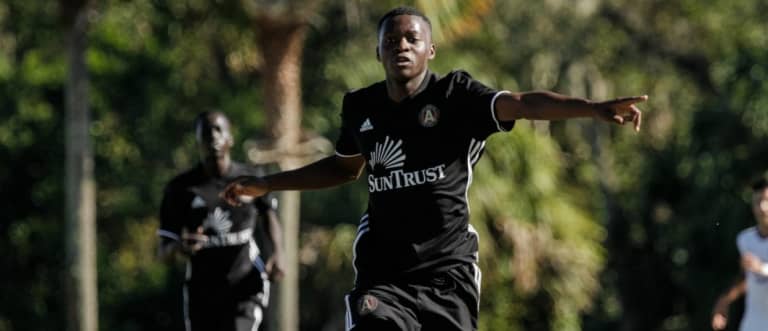
“They reached out to all these clubs and really built partnerships. They had their pulse on the area, they understood the community they were coming into. When they did it, they were able to consolidate a lot of the talent. Georgia always had an enormous amount of talent, but it was always spread among 10, 12, 15 clubs, so you never really got to see what the state had to offer from a youth standpoint … and you saw right off the bat, their U-16 group won the national championship.”
Elite youth soccer in the US is notorious for murky politics and cutthroat competition, not only on the field but between organizations, especially when it comes to recruitment of talent. Georgia’s sprawling youth scene was particularly fractured in the years before ATLUTD’s conception.
Yet as Newbury notes, technical director Carlos Bocanegra and the rest of the expansion side’s leaders – backed by the substantial financial commitment of owner Arthur Blank – have made several key moves to catapult their development system forward from the start. Perhaps the most crucial was the approach made to Annan and his colleagues at Georgia United Soccer Alliance in 2015.
Annan – an Englishman by birth who’s coached in Atlanta for decades – and several other veteran area youth coaches had formed Georgia United in 2010, banding together the talent pools of several competing youth organizations across the Atlanta region, in order to create Development Academy teams that could compete on a national level.
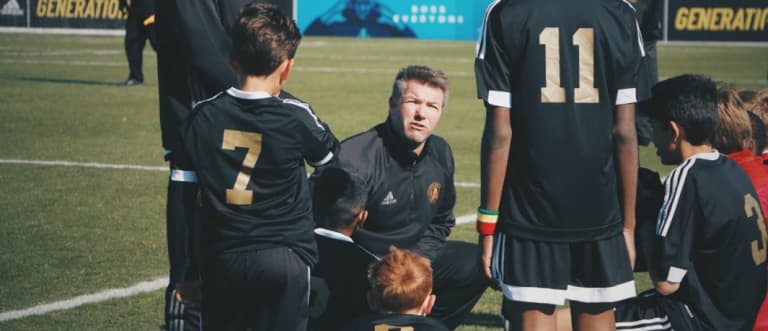
It worked. In 2015 their U-16 team reached the DA’s national semifinals, the only non-MLS squad of the eight to do so. Though they fell 2-1 to a stacked New York Red Bulls side, the achievement was substantial, especially given that Georgia United was a free-to-play operation that its staff subsidized by working for free.
Shortly afterwards Bocanegra and Blank proposed that its upper age groups merge with Atlanta United, giving the future MLS newcomers a head start on the academy side while pushing forward Georgia United’s vision with heftier resources. Annan came along for the ride, bringing a sterling reputation that has won the trust of colleagues and former competitors.
“I think the biggest thing, when we’re dealing with young people or we’re dealing with a huge organization is just being transparent, being honest,” said Iggy Moleka, a longtime coach and director of United Futbol Academy, one of Georgia United’s feeder clubs. “They came in with no arrogance, they came in starting just like we started, reaching out to different clubs: ‘Can we make this happen? We’re going to need everybody to buy in. We’re going to need everybody’s help.’
“They didn’t have to do it – because eventually, what kid doesn’t want to go play for the professional team in town? But that’s what they did. They came in very humble, talking to us, providing a service for us to help them keep developing the next-level players.
“The best move for them was to have a local person. Tony Annan has been a great guy for the game of soccer, has been at the grassroots, knows a lot of coaches, knows how the Georgia market works – because it’s a very tough market when it comes to youth soccer, and very competitive. … Having good guys that we all know are good for the game and promote the game and coach the game the right way, it’s a no-brainer for us to encourage our kids to go that avenue.”
Some youth coaches make their unhappiness known when a professional club recruits one or two of their best players to move up to the academy level. Not so much in Atlanta. Annan and his staff scout for talent year-round, and are routinely contacted by grassroots coaches recommending players like Kunga, whose inspiring story has taken him from refugee status to rising pro and national-team prospect.
“They’re visible. They’re out at the youth tournaments. Once the tryouts end, they don’t stop and say, ‘We’ve got our team.’ They’re still out there watching games, and the coaches communicate with each other internally,” said Newbury. “They keep those lines of communication open. They want to hear from the coaches. Tony Annan responds to every single text message or email you send.”
Annan emphasizes that any player from any club or background is welcomed, and the dazzlingly diverse rosters of the academy teams are proof.
“We brought 126 players from different parts of Atlanta,” he said. “The credit’s got to go out to the whole city – the players were ready to compete, ready to go, good training players who have good attitudes.
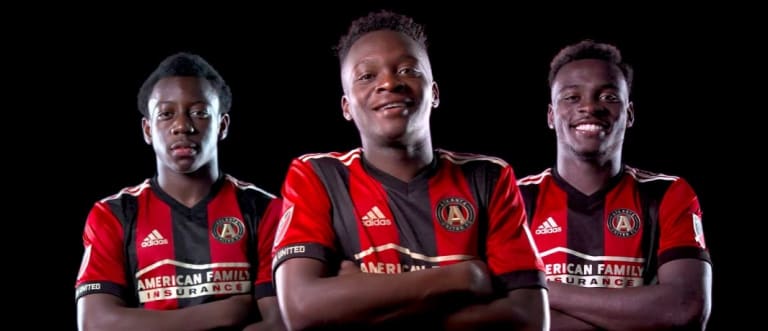
“We had a great year," Annan added, "but now we’ve got to do it again.”
During his own playing days, Moleka starred for the Atlanta Silverbacks during that club’s professional days in the USL and NASL. While the Silverbacks carried the flag for Atlanta pro soccer over nearly two decades, he says ATLUTD’s arrival has galvanized the community – and inspired its young players – like nothing he’s ever seen.
“Let me tell you this: I played for the Atlanta Silverbacks, and I think the Atlanta Silverbacks’ owners were fantastic people that cared for the community and did great things within the community. And then this thing came,” he said with a laugh.
“And I’ve been taking my family to every Atlanta United game and it’s amazing, man. It’s the greatest thing that I’ve seen come into this city for a long time. So I just get excited. Every game we go to it’s a great atmosphere. And for the kids, now you have a professional team in your backyard, the dream gets closer and closer and you really think you can reach it. And that’s good.”
Carleton rose through the Southern Soccer Association before joining UFA, moving on to Georgia United and then to ATLUTD, where he now headlines a talent-laden generation that hopes to push for MLS minutes in 2018. He too has seen a transformation.
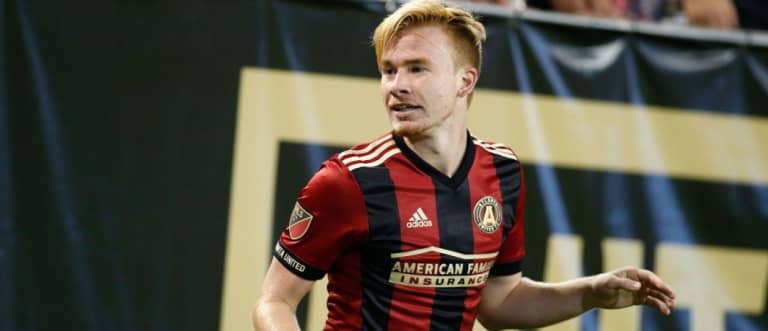
“It’s changed quite a bit,” he said of the area’s youth scene. “The main thing for kids in the South that weren’t in an MLS area is that after U-18 or U-19 level, there was nothing to really reach for. Everybody would go to college [soccer] but if you were one of those top players, you don’t have something to say, ‘All right, I want to be able to get to that next level.’
“And I think Atlanta [United] has definitely brought that along as an MLS first team, and to be able to send guys to [USL affilate] Charleston Battery – that’s helped out a lot. And to have that goal to reach for, even for the U-12s and 13s working their way up, and for the 19s and 17s and everybody in the club and in the state or in the Southeast.”
United’s academy teams use the same world-class training facility and sports science technology as the first team, and usually train on an adjacent field, fostering a connection to the MLS squad. It will take plenty more sustained excellence for local talent like Carleton to earn playing time alongside the likes of Miguel Almiron and Josef Martinez, but a clear pathway has been laid out.
“When I first sat down with Carlos and Tony Annan, they were really adamant about creating a European-style format,” said Newbury. “I know everybody says that, but it appears they actually did it.
“It is very clear what they’re trying to do. They are trying to develop players to play at the next level and that is their sole purpose. And that is refreshing to see.”


